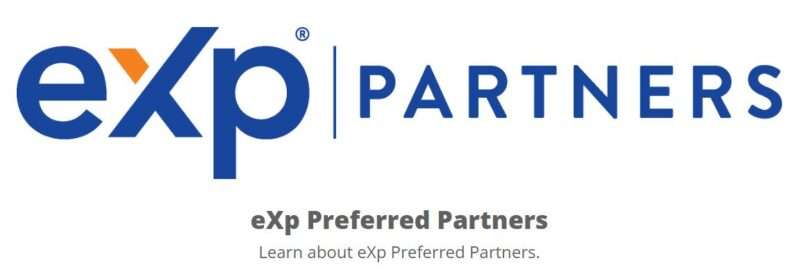
In most commercial real estate transactions, the buyer finds a property, negotiates a purchase contract with the seller, obtains financing from a commercial lender, and closes escrow.
However, a growing number of property owners are discovering that they can directly provide financing to buyers to sell property faster, ultimately generating more potential profits from interest income.
Owner financing for commercial properties gives buyers and sellers more control over the transaction and enormous profits by cutting out the traditional commercial lender as a middleman.
What is Owner Financing for Commercial Property
Some commercial properties for sale by owner (FSBO) offer buyers owner financing. When a real estate sale by the owner occurs, the seller accepts regular monthly payments directly from the buyer instead of the buyer having to go through the time, trouble, and expense of obtaining a commercial real estate mortgage.
Depending on the market in which the investment property for sale by the owner is located, owner financing may go by a different name.
The terms seller financing, owner carryback, the owner will carry, carrying the note, commercial owner financing, and the owner brought financing are all used to describe owner financing. In some regions, owner financing is referred to as a ‘land contract,’ even if the property is a building versus commercial land for sale by an owner.
Pros and Cons of Owner Financing
There are several benefits and potential drawbacks to buyers and sellers who agree to owner financing:
Seller benefits include:
- The ability to sell a problematic property at a reasonable price with a faster closing and fewer days on the market.
- We are accruing monthly interest income for the seller as part of each mortgage payment from the buyer.
- We are paying capital gains tax pro rata with each buyer's mortgage payment instead of in one lump sum.
- The ability to sell the note to a real estate note buyer.
- Option to foreclose and take the property back if the buyer defaults on the owner-financed mortgage.
Seller drawbacks include:
- Sellers must conduct due diligence on the buyer when providing owner financing.
- Sales proceeds are received as part of mortgage payment instead of upfront.
- An attorney is needed to draw up loan documents, and an escrow company is used to collect and track buyer mortgage payments.
- Economic cycles may affect mortgage payment collection from the buyer.
- While the seller can foreclose if the buyer defaults, the seller may not want the property back.
Buyer benefits include:
- The buyer does not have to meet traditional lenders’ requirements of a commercial bank.
- Potentially easier to qualify for owner financing offered by a seller.
- Close of escrow usually is faster with owner-financed commercial real estate.
- Easier to negotiate owner financing terms such as interest rate, payment due date, and time of the note.
- Lower closing costs due to the absence of bank fees and financing costs.
Buyer drawbacks include:
- Not all sellers are willing to offer owner financing.
- Sellers may demand a higher price in exchange for carrying the note.
- Owners offering owner financing may also be less inclined to negotiate on purchase contract terms and contingencies.
- Sellers offering owner financing may still investigate buyer credentials such as credit, assets, and liabilities.
- Missed mortgage payments to the seller can lead to foreclosure and loss of property.
How Owner Financing for Commercial Property Works
Now let’s look at an example of how owner financing in commercial real estate can work.
In this scenario, we’ll assume the owner is offering owner financing to sell a difficult property, reduce upfront capital gains tax liability, and earn interest income. The buyer benefits by making a lower down payment and getting a very fair price on the property at an attractive interest rate:
- Purchase price = $2,000,000
- Down payment = $200,000 (10% of purchase price)
- Amount financed = $1,800,000 (owner carryback)
- Interest rate = 8%
- Amortization = 30-year repayment schedule
- Term = 10 years (remaining loan balance must be paid in full)
- Mortgage payment = $13,207 (principal and interest)
- Total interest received by seller = $1,499,460 over 10-year loan term
- Total payments received by seller = $1,756,531 (principal and interest) over the 10-year loan term
- Balloon payment received by seller = $1,542,928 at the end of the 10-year loan term
- Total proceeds received by seller = $1,756,531 (principal and interest) payments + $1,542,928 balloon payment = $3,299,459
- Original owner carryback amount = $1,800,000
Owner Financing Terms to Know
The terminology used and structure of an owner-financing mortgage document (also known as a promissory note) is similar to what traditional commercial real estate lenders use:
Amortization
Amortization is the schedule of periodic payments, including principal and interest. In the above example, the owner carryback amount of $1,800,000 is amortized over 30 years even though the loan term is for ten years.
Term
The loan term is until the borrower must pay off the remaining balance. While most residential mortgages have 30 years, commercial real estate loans typically have terms of 5, 10, or 15 years. In our example, the time of the owner-financed loan is ten years.
Balloon
The balloon is the remaining loan balance principal that must be paid at the end of the loan term. In the above example, the seller receives a $1,542,928 balloon payment in addition to the periodic mortgage payments already received from the buyer. The buyer and seller could agree to finance the remaining principal balance with a new owner financing note, or the buyer could obtain financing from a traditional commercial lender.
Promissory note
A promissory note details the terms and conditions of the owner-financed mortgage, including:
- Loan amount
- Repayment term
- Interest rate (fixed or variable)
- Repayment schedule
- Payment frequency (monthly, quarterly, etc.)
- Payment amount (principal and interest)
- Property taxes and insurance are included in the payment amount
- Balloon payment details
- Late payment fees
- Prepayment penalty
- Due-on-sale clause (requires loan to be paid in full if the buyer sells the property before the end of the loan term)
Owner financing for commercial property can create a win-win situation for sellers and buyers. Sellers who provide owner financing can benefit from faster marketing time, additional profit from interest income, and spreading the payment of capital gains tax over a more extended period.
Buyers who buy property from a seller carrying the note can benefit from having flexible loan terms, a faster close of escrow, and lower loan fees since no commercial lender is involved in the transaction.
Source: What is Owner Financing for Commercial Property? | Crexi Insights
https://www.creconsult.net/market-trends/what-is-owner-financing-for-commercial-property/


 [ux_text text_align="left"]
[ux_text text_align="left"]

